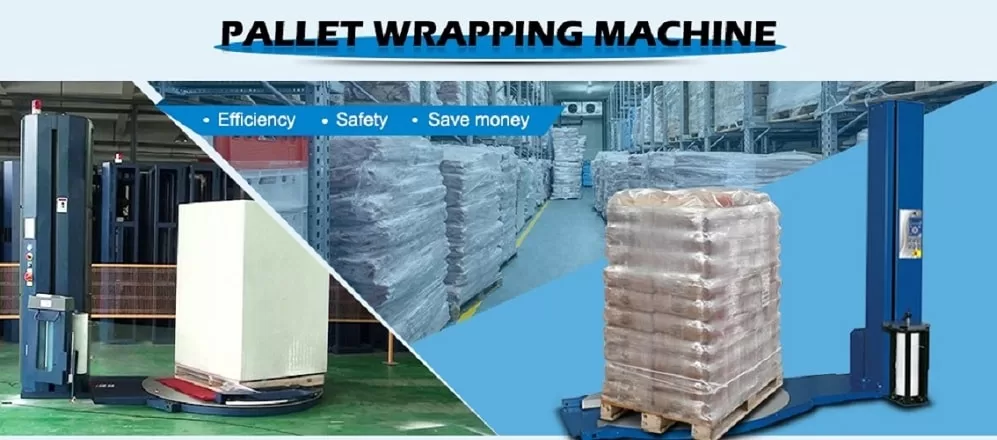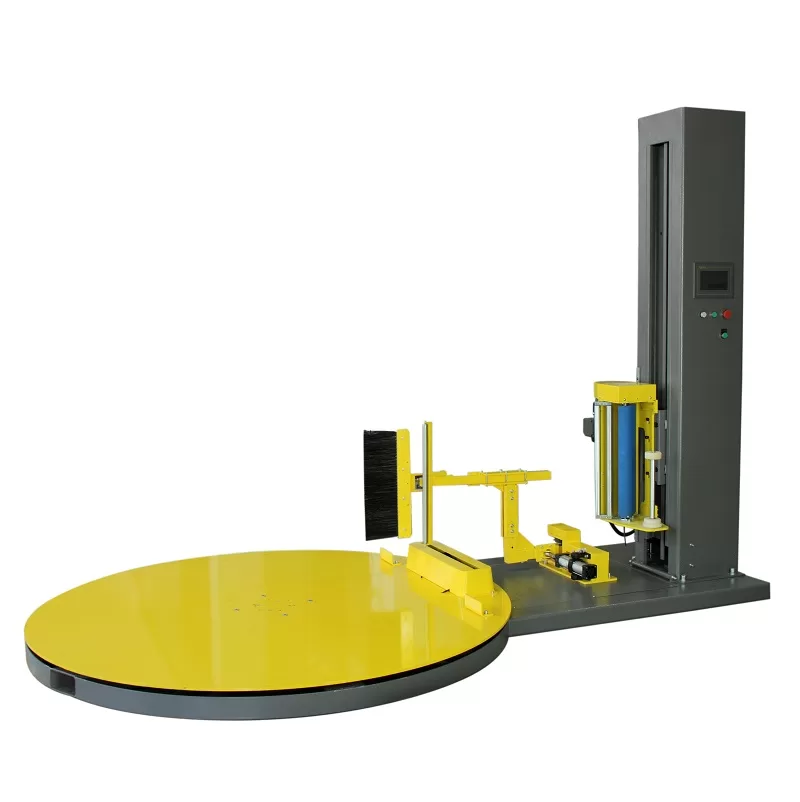Optimizing Your End-of-Line: The Economic Case for Automatic Pallet Strapping and Packing Machines
In today's demanding manufacturing and logistics environments, maximizing efficiency while controlling costs is critical. Manual end-of-line packaging processes, particularly pallet strapping, can introduce bottlenecks, inconsistencies, and safety risks. Investing in an Automatic Pallet Strapping and Packing Machine presents a strategic solution to these challenges, offering substantial economic advantages that extend beyond simple labor savings. This guide explores the operational and financial justifications for adopting this technology.
What Are Automatic Pallet Strapping and Packing Machines?
These automated systems are engineered to secure goods onto pallets using plastic (typically PP or PET) or metal strapping. They perform the tensioning, sealing (usually via heat or friction weld), and cutting of the straps without manual intervention. Integration with conveyor systems allows for a seamless flow from production or picking lines to final shipment preparation. Key functions often include:
- Applying vertical or horizontal straps (or both).
- Accommodating various pallet sizes and load heights.
- Integrating with pallet wrappers for a complete packing solution.
- Operating at consistent speeds matched to line throughput.
Driving Operational Efficiency and Throughput
A primary driver for automation is the significant uplift in operational efficiency. Manual strapping is labor-intensive and variable in speed and quality. Automatic systems offer:
- Consistent Cycle Times: Machines operate at predictable speeds, eliminating human variability and enabling better production planning.
- Reduced Bottlenecks: Automated strapping prevents pallet pile-ups at the end of the line, ensuring smoother overall workflow.
- Minimized Errors: Consistent strap placement and tension reduce packaging failures and the need for rework.
- Continuous Operation: Designed for durability, these machines can operate reliably across multiple shifts with minimal downtime for maintenance.
Achieving Significant Cost Reductions
While requiring an initial capital investment, automatic pallet strappers deliver compelling cost savings over their lifespan:
- Reduced Labor Costs: Automating the strapping process frees up personnel for higher-value tasks or reduces overall headcount needs, directly lowering labor expenses.
- Optimized Material Usage: Machines apply precise tension and utilize strap efficiently, minimizing waste compared to manual application. Some systems can optimize strap patterns based on load requirements.
- Lower Damage Rates: Consistent and secure strapping significantly reduces product damage during handling, storage, and transit, leading to fewer returns and claims.
- Improved Workplace Safety: Eliminating manual strapping tasks reduces ergonomic risks (bending, lifting, repetitive motion), potentially lowering worker compensation claims and insurance premiums. Calculating the Return on Investment (ROI) should factor in all these savings streams.
Enhancing Load Stability and Product Protection
Ensuring product security during transit is paramount. Automatic strapping machines deliver:
- Consistent Strap Tension: Proper, uniform tension is critical for load stability. Machines apply the programmed tension accurately every time, preventing strap loosening or product damage from over-tightening.
- Precise Strap Placement: Automated systems ensure straps are placed correctly according to predefined patterns, maximizing load containment and stability.
- Reduced Product Damage: Stable loads are less likely to shift or collapse, protecting goods from impact, vibration, and compression damage throughout the supply chain. This maintains product quality and enhances customer satisfaction upon arrival.

pallet stretch wrap 4 Boosting Workplace Safety and Ergonomics
Manual pallet strapping often involves awkward postures, repetitive motions, and potential strain injuries. Automating this task directly improves workplace safety:
- Elimination of Manual Strain: Machines handle the physical demands of tensioning and sealing straps.
- Reduced Injury Risk: Operators are removed from direct interaction with the strapping process, minimizing risks of cuts, strains, or impact injuries.
- Integrated Safety Features: Modern machines incorporate safety guarding, emergency stops, and sensors to protect personnel during operation and maintenance.
Supporting Sustainability Goals
Modern businesses face increasing pressure to adopt environmentally responsible practices. Automatic strapping systems contribute to sustainability efforts:
- Material Optimization: Precise application reduces the total amount of strapping material consumed.
- Recyclable Materials: Most plastic straps (PP and PET) are recyclable, aligning with circular economy principles.
- Energy Efficiency: Newer machine designs often incorporate energy-saving components and operating modes.
- Reduced Product Waste: By preventing damage, less product ends up discarded, conserving resources used in manufacturing and transport.
Versatility Across Diverse Industries and Applications
Automatic pallet strapping machines are not limited to specific sectors. Their versatility makes them valuable across industries such as:
- Manufacturing (e.g., building materials, appliances, automotive parts)
- Food and Beverage
- Pharmaceuticals
- Logistics and Distribution Centers
- Printing and Publishing
- Agriculture
These systems can be configured for various load types, sizes, and weights, offering flexibility to handle diverse product lines and adapt to changing packaging requirements.
Streamlining the Broader Supply Chain
The impact of efficient palletizing extends throughout the supply chain:
- Faster Dock-to-Stock Times: Securely strapped pallets move more quickly through receiving and putaway processes.
- Improved Inventory Management: Consistently packaged units are easier to handle, store, and track.
- Enhanced Transport Efficiency: Stable loads allow for better space utilization in trucks and containers and reduce transit delays caused by shifting cargo.
- Stronger Partner Relationships: Reliable, damage-free shipments improve trust with logistics providers and end customers.
Meeting Regulatory and Retailer Compliance
Many industries and major retailers have specific requirements for pallet packaging stability and safety. Automatic strapping helps ensure compliance with these standards:
- Consistent Application: Guarantees that strapping meets predefined specifications every time.
- Reduced Risk of Penalties: Avoids fines or shipment rejections due to non-compliant packaging.
- Enhanced Load Traceability: Systems can often integrate with labeling and data logging to track packaging parameters.
Key Considerations When Investing
Choosing the right automatic pallet strapping machine involves evaluating several factors:
- Throughput Requirements: Match machine speed to your line's output.
- Load Characteristics: Consider size, weight, stability, and product type.
- Strapping Needs: Vertical, horizontal, or both? What type and size of strap?
- Integration: How will it connect with existing conveyors and other equipment (like wrappers)?
- Budget: Factor in the total cost of ownership, including maintenance and consumables.
- Vendor Support: Evaluate availability of service, parts, and technical expertise.

pallet stretch wrap 1 Conclusion: A Strategic Investment for Future Growth
Investing in an automatic pallet strapping and packing machine is more than just a cost-cutting measure; it's a strategic move to enhance operational resilience, product quality, and workplace safety. The economic benefits – stemming from increased efficiency, reduced labor and material costs, minimized damage, and improved compliance – provide a strong justification for adoption. By automating this critical end-of-line process, businesses can streamline their operations, strengthen their supply chain performance, and position themselves for sustained competitiveness in a dynamic market landscape.